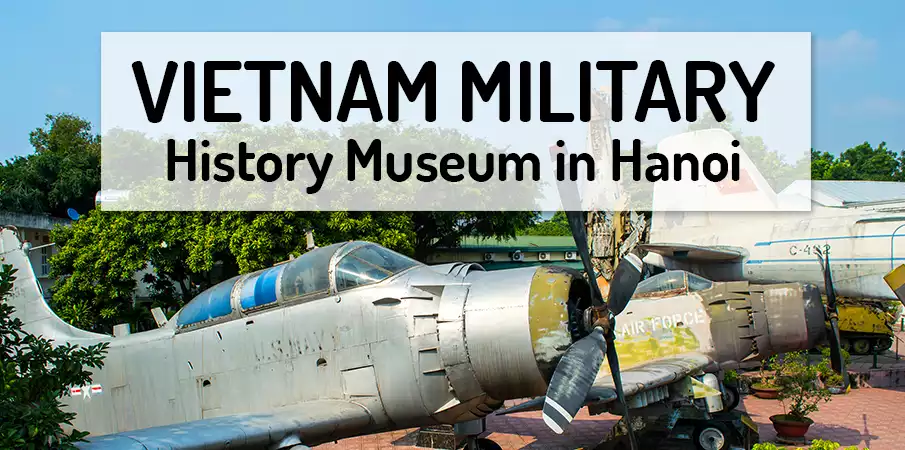
Quick answer: The Vietnam Military History Museum in Hanoi is a huge, modern complex that chronicles Vietnam’s military past — from ancient defence to the wars against France and the U.S. With indoor galleries and a sprawling outdoor collection of aircraft, tanks and artillery, it’s a powerful place to understand Vietnam’s struggle for independence and national pride.
At a glance:
- 📍 Location: Km 6+500, Thăng Long Avenue, Nam Từ Liêm, Hanoi.
- ⏱️ Opening hours: 8:00 AM–11:30 AM & 1:00 PM–4:30 PM, closed on Mondays and Fridays.
- 💰 Admission: ~ 40,000 VND (discounts for students).
- 🏛️ Size & structure: The complex covers ~386,600 m², with a 4‑floor main building and a 45 m-high Victory Tower.
- ⭐ Highlights: Over 150,000 artifacts, including 4 national treasures.
- 📷 Outdoor display: Iconic pieces like MiG‑17, SU‑22, PT‑67 tank, and US war equipment.
Last updated in November 2025
A Brief History of the Vietnam Military History Museum in Hanoi.
-
- The Vietnam Military History Museum is a must-visit destination for anyone interested in learning about the military history of Vietnam. Located in Hanoi, Vietnam, the museum offers visitors an immersive experience, showcasing thousands of artifacts and exhibits that illustrate the country’s struggles and victories in battles.
- The museum was built in 1956, shortly after Vietnam gained independence from France. Its primary purpose was to collect, preserve, and display the military history of Vietnam and showcase the sacrifices made by the country’s soldiers during various conflicts.
- The museum is spread across several floors and houses a wide range of exhibits that cover different periods of Vietnam’s military history. The exhibits include weapons, uniforms, photographs, and documents related to Vietnam’s struggles for independence, the Vietnam War, and other regional conflicts.
BOOK a TOUR / TICKETS in Hanoi ➜
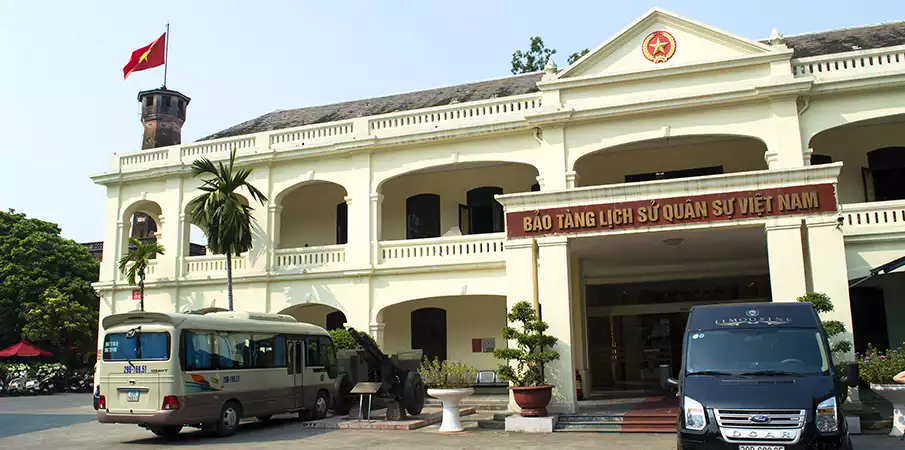
Museum is spread across several floors and houses.
-
- The first floor of the museum features exhibits related to the ancient period of Vietnam’s military history. Visitors can see weapons and artifacts from the Ly, Tran, and Le dynasties, as well as displays related to the country’s fight against Chinese invaders.
- The second floor focuses on the Vietnam War, also known as the American War. Here, visitors can see exhibits related to the guerrilla warfare tactics used by the Viet Cong and the North Vietnamese Army against the United States military. Some of the highlights include the wreckage of American planes and tanks, as well as displays showcasing the conditions of the prison camps where American POWs were held.
- The third floor of the museum is dedicated to the post-Vietnam War period and covers the country’s involvement in regional conflicts such as the Cambodian-Vietnamese War. Visitors can see exhibits related to the Vietnamese invasion of Cambodia and the country’s efforts to defend its borders against Chinese attacks.
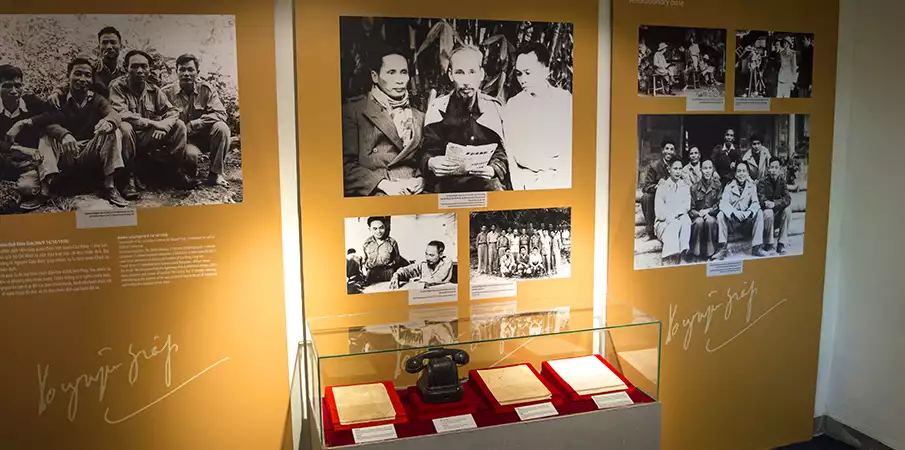
The Outdoor Display Area: A Closer Look at Military Equipment.
-
- One of the most striking features of the museum is the outdoor display area, which is home to a wide range of military equipment used by the Vietnamese military during various conflicts. Visitors can see tanks, planes, and artillery pieces up close and even climb inside some of them.
- In addition to the exhibits, the museum also features a bookstore that specializes in military books and publications. Visitors can also watch films and documentaries related to Vietnam’s military history in the museum’s cinema.
- In conclusion, the Vietnam Military History Museum in Hanoi is an excellent destination for anyone interested in learning about the military history of Vietnam. It is very easily accessible from Old Quarter of Hanoi and the museum’s exhibits offer a unique and comprehensive look at the country’s struggles and victories, while the outdoor display area provides visitors with a chance to see military equipment up close. With its central location and easy accessibility, the museum is a must-visit destination for anyone traveling to Hanoi.
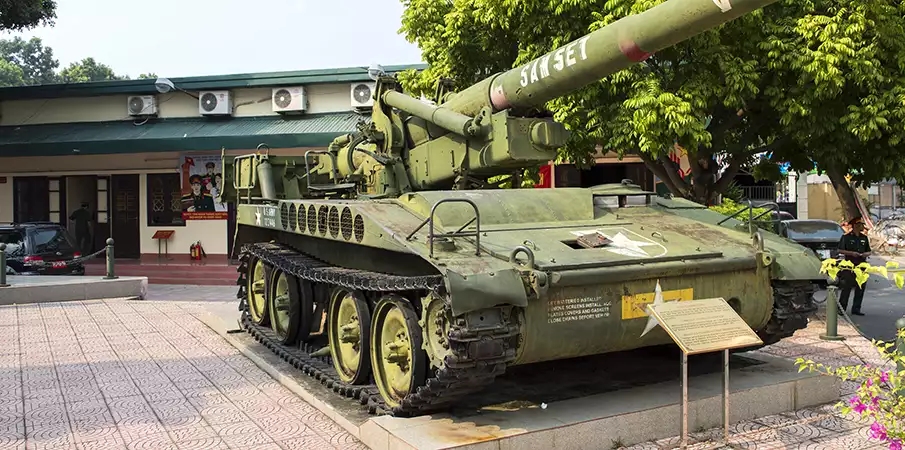
How to get there, how to buy tickets, when to go:
-
- Getting to the Vietnam Military History Museum in Hanoi is relatively easy, and there are several options for visitors. The museum is located at 28A Dien Bien Phu Street, Ba Dinh District, Hanoi, which is accessible by public transport, taxi, or motorbike.
- Visitors can take the bus to the museum, and the closest bus stop is Dien Bien Phu – Hoang Dieu, which is about a 10-minute walk from the museum. Alternatively, visitors can take a taxi or motorbike to the museum. Motorbike taxis are a popular and inexpensive option in Hanoi, but visitors should negotiate the fare before getting on the motorbike.
- The Vietnam Military History Museum is open every day from 8 am to 11:30 am and from 1:30 pm to 4:30 pm, except for Mondays and Fridays when it is closed. Visitors can purchase tickets at the museum entrance. The ticket price is relatively affordable, and there is a discount for students and senior citizens.
- Visitors should plan to spend at least a couple of hours at the museum to explore all the exhibits fully. The best time to visit the museum is during the morning when it first opens or in the afternoon, before it closes. It is advisable to avoid visiting during peak hours or weekends when the museum can get crowded.
- Before visiting the museum, visitors should also be aware of the museum’s dress code. The museum has a strict dress code, and visitors are not allowed to wear shorts, tank tops, or clothing that exposes the shoulders. Visitors who do not adhere to the dress code will be denied entry to the museum.
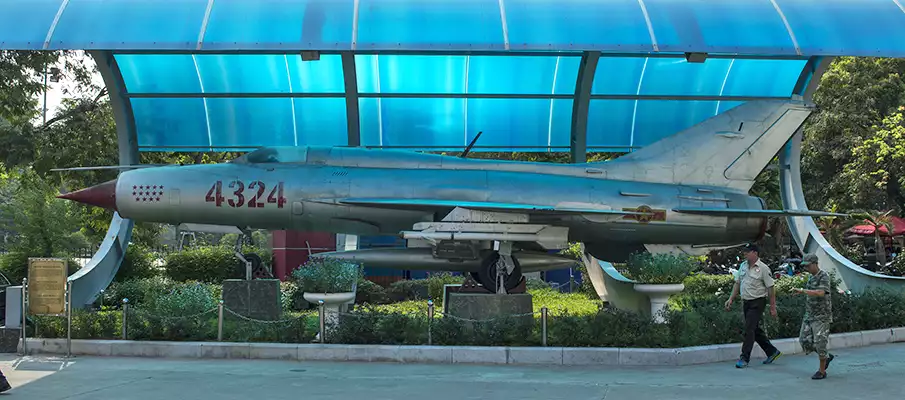
Interesting Facts About Vietnam Military History Museum:
-
- The museum was originally named the Museum of the Vietnamese Revolution, and it was located in the Ho Chi Minh Mausoleum complex before moving to its current location in 1959.
-
- The museum’s architecture is unique, featuring a combination of traditional Vietnamese and modern Soviet styles. The main building has three floors and a large courtyard that displays various military equipment, including tanks, aircraft, and artillery.
-
- The museum’s exhibits are divided into three main sections: Ancient Period, the Wars of Resistance against Foreigners, and the Wars of National Liberation. The exhibits cover over 20 centuries of Vietnamese military history, from the Hung Kings period to the present day.
-
- The museum has a vast collection of artifacts, including weapons, uniforms, documents, and photographs, that provide a comprehensive overview of Vietnam’s military history.
-
- The museum’s most prominent exhibit is the wreckage of a B-52 bomber that was shot down during the Vietnam War. The wreckage is on display in the museum courtyard, and visitors can get up close to see the damage caused by the crash.
-
- The museum has a cinema that shows films and documentaries about Vietnam’s military history, including footage of significant battles and speeches by military leaders.
-
- The museum hosts several events and activities throughout the year, including exhibitions, seminars, and cultural performances that provide a more in-depth understanding of Vietnam’s military history.
-
- The museum is a popular destination for tourists and locals alike, and it receives thousands of visitors every year who come to learn about Vietnam’s rich military history.
-
- The Hanoi Flag Tower, also known as the Cot Co Tower, is a famous landmark in Hanoi, Vietnam. It is a tall, flag-shaped tower located in the Vietnam Military History Museum, you can visit this site.
-
- If you are interesting about war conflicts in Vietnam, you can also visit Hoa Lo Prison Museum.
📍 Location of Vietnam Military History Museum in Hanoi
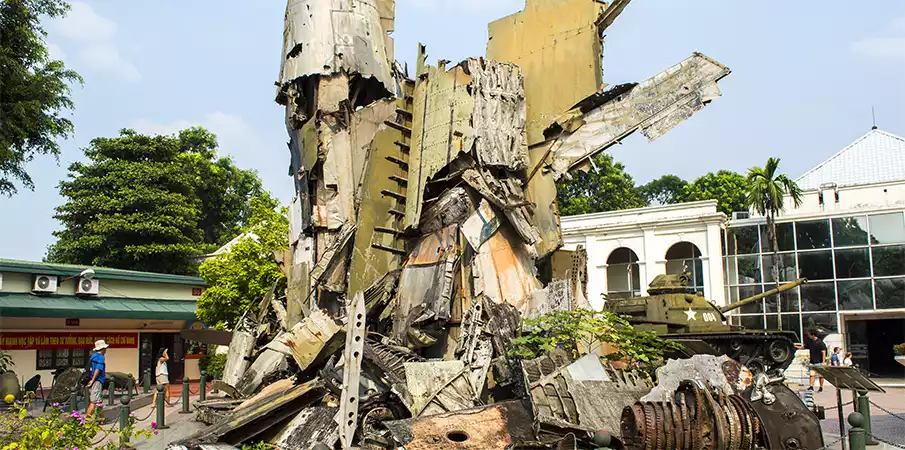
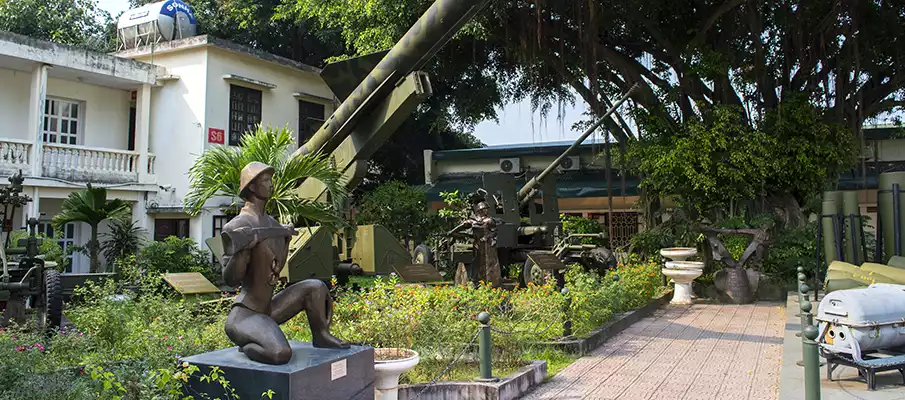
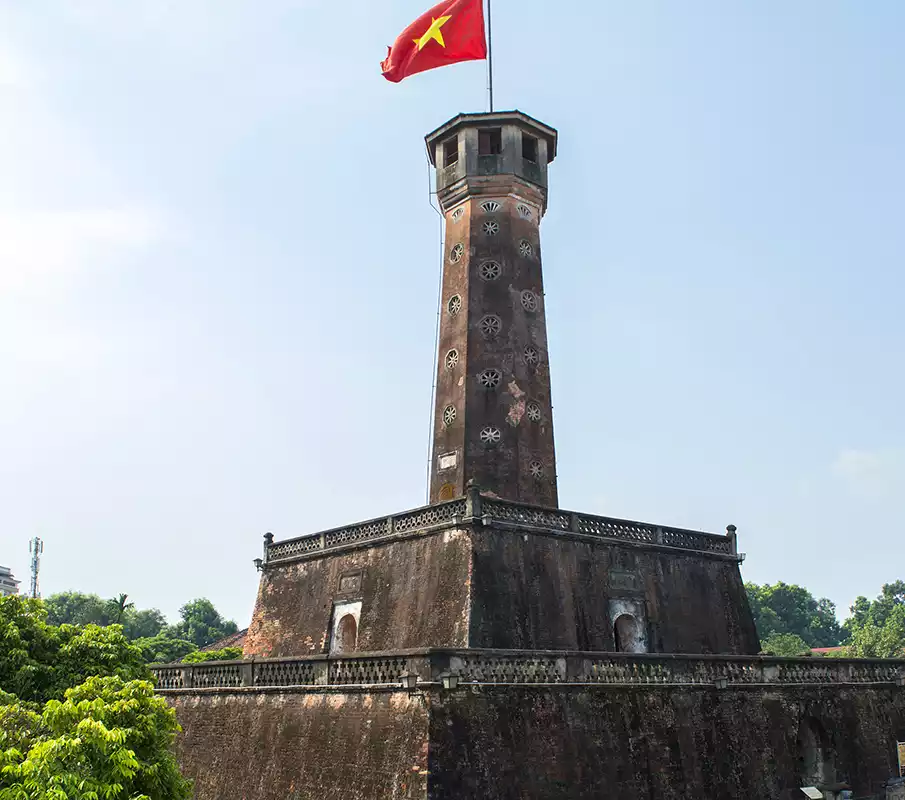
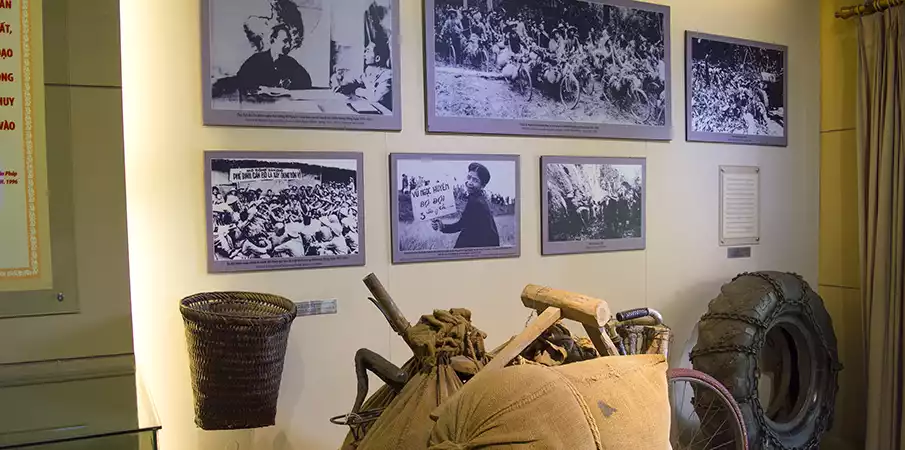
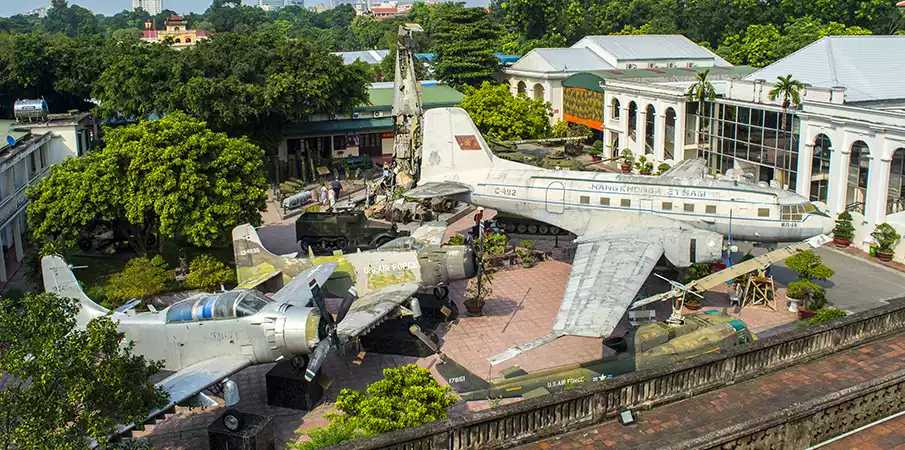
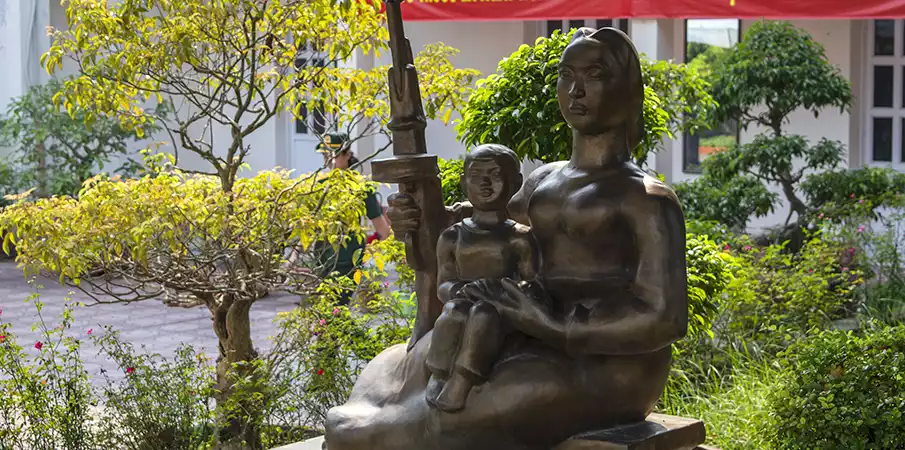
❓ FAQ + TIPS for Vietnam Military History Museum:
1. What are the museum’s opening hours and admission fees?
-
- The museum is open every day from 8:00 am to 4:30 pm, except for Mondays and Fridays. The admission fee is 40,000 VND (approximately 1.75 USD) for adults and 20,000 VND (approximately 0.87 USD) for children under 15 years old.
2. How long does it take to tour the museum?
-
- The museum is quite large, and it can take several hours to explore all of the exhibits thoroughly. Most visitors spend between two and three hours at the museum, but you could easily spend half a day or more if you are particularly interested in Vietnam’s military history.
3. Are there guided tours available?
-
- Yes, guided tours are available in English and Vietnamese, and they are included in the admission fee. The tours are conducted by knowledgeable and enthusiastic guides who provide in-depth information about the museum’s exhibits and Vietnam’s military history.
4. Can visitors take photographs inside the museum?
-
- Yes, visitors are allowed to take photographs inside the museum, but flash photography is not permitted in some areas. Visitors should also be respectful of other visitors and not use selfie sticks or tripods, which can be a nuisance in crowded areas.
5. What are some of the must-see exhibits at the museum?
-
- Some of the museum’s most popular exhibits include the wreckage of a B-52 bomber, a collection of captured American weapons and equipment, and a diorama of the famous battle of Dien Bien Phu. The museum also has a large collection of artifacts related to Vietnam’s ancient military history, including weapons, armor, and tools.
6. Is there a gift shop or café at the museum?
-
- Yes, there is a gift shop at the museum that sells a variety of souvenirs, including books, postcards, and replicas of military equipment. There is also a café that serves drinks and light snacks, making it a great place to take a break during your visit.
7. Are there any restrictions on what visitors can bring into the museum?
-
- Visitors are not allowed to bring in food or drinks, large bags, or backpacks. There are lockers available at the museum’s entrance where visitors can store their belongings. Visitors should also dress appropriately and avoid wearing revealing clothing or clothing with offensive slogans or graphics.
8. Is the museum accessible for visitors with disabilities?
-
- The museum has wheelchair access to all of its main exhibits and facilities. There are also ramps and elevators available for visitors with mobility issues. However, some of the outdoor exhibits may be difficult to navigate for visitors with mobility issues.
9. Are there any special events or exhibitions at the museum?
-
- The museum hosts a variety of special events and exhibitions throughout the year, including temporary exhibits on specific aspects of Vietnam’s military history. The museum also hosts cultural performances and seminars related to Vietnam’s military history.
10. What is the best way to get to the museum?
-
- The museum is located in central Hanoi, and it is easily accessible by taxi, bus, or motorbike. Visitors can also take a cyclo (a traditional Vietnamese bicycle taxi) from the Old Quarter, which is a fun and unique way to travel to the museum.
11. Where you can go, if you are already at museum?
-
- If you are going to Vietnam Military History Museum, you can also walk to Ho Chi Minh Mausoleum and Thang Long Citadel. These sites are about 1 km from the museum.
12. How to travel solo in Vietnam?
-
- Discover the wonders of solo travel in Vietnam as you explore ancient temples, cruise through scenic landscapes or karst sceneries, hike various national parks and ethnic villages and connect with the warm-hearted locals, creating a personalized journey of cultural immersion and breathtaking experiences.
13. What are the most interesting things or facts about Vietnam?
-
- Vietnam, a country with a captivating allure, is celebrated for its breathtaking landscapes, including the mesmerizing limestone karsts of Halong Bay, the terraced rice fields of Sapa, and the bustling waterways of the Mekong Delta. Its rich history unfolds through ancient temples in Hanoi, the imperial city of Hue, and the Cu Chi Tunnels, providing a glimpse into Vietnam’s resilience during wartime. The country’s vibrant culture, delicious cuisine, and warm hospitality further enhance the allure of this Southeast Asian gem. Read this: 15 Interesting Things of Vietnam.
BOOK a TOUR / TICKETS in Hanoi ➜
| Facts about Vietnam Military History Museum: | Description |
|---|---|
| 1. Historical Repository: |
The Vietnam Military History Museum is a treasure trove of the nation’s military heritage. Located in Hanoi, it is a prominent institution dedicated to preserving, showcasing, and celebrating Vietnam’s rich military history, from ancient times to the modern era. Its extensive collection offers a captivating glimpse into the nation’s courageous past. |
| 2. Iconic Flag Tower: |
The museum’s iconic flag tower is a symbol of national pride and resilience. It was a vital structure during the Vietnam War, acting as a communication and observation post. Visitors can explore the tower’s historical significance and enjoy panoramic views of Hanoi from its summit. |
| 3. Historic Buildings: |
The museum is housed in a complex of historic French colonial-era buildings, adding to its architectural charm. Originally constructed as a military training center by the French, these structures are an integral part of Vietnam’s military history and have been thoughtfully preserved to showcase the nation’s heritage. |
| 4. Outdoor Exhibits: |
One of the museum’s most captivating features is its outdoor exhibition area, featuring an extensive collection of military hardware, including tanks, artillery, and aircraft. Visitors can get up close to these relics of war, gaining a deep appreciation for the role they played in Vietnam’s history. |
| 5. Ho Chi Minh’s Artifacts: |
The museum houses a remarkable collection of artifacts related to Ho Chi Minh, the founding father of modern Vietnam. From personal belongings to historical documents, this exhibition offers a profound insight into the life and ideals of „Uncle Ho“ and his pivotal role in Vietnam’s history. |
| 6. Vietnam War Exhibits: |
The Vietnam Military History Museum’s exhibits dedicated to the Vietnam War are particularly poignant. Through photographs, documents, and personal accounts, the museum vividly portrays the experiences of Vietnamese soldiers and civilians during this tumultuous period, highlighting the nation’s resilience and determination. |
| 7. Liberation Army Gallery: |
A significant section of the museum is dedicated to the People’s Liberation Army of Vietnam. This gallery showcases the strategies, tactics, and sacrifices made by the army during various conflicts, including the First Indochina War and the Vietnam War, demonstrating the unwavering commitment to independence. |
| 8. Historical Narratives: |
The museum’s exhibitions are not mere displays of artifacts; they weave compelling narratives. Visitors are immersed in the stories of courageous soldiers, the struggles of the Vietnamese people, and the nation’s journey towards independence. The exhibits offer a profound understanding of Vietnam’s military history. |
| 9. Cultural and Educational Hub: |
The Vietnam Military History Museum serves as a cultural and educational hub, hosting a wide range of activities, including lectures, seminars, and cultural events. It is a place where history comes alive, offering valuable insights into Vietnam’s military heritage and its influence on the nation’s identity. |
| 10. A Testament to National Spirit: |
The Vietnam Military History Museum stands as a testament to the indomitable spirit and unwavering determination of the Vietnamese people. It showcases the courage, sacrifice, and resilience that have defined the nation’s military history. Visitors leave with a profound appreciation for Vietnam’s journey to independence and its enduring commitment to peace and freedom. |
Hanoi Old Quarter|Bach Long Glass Bridge|Hoi An – Travel Guide|Mui Ne – Travel Guide|Quy Nhon – Travel Guide|Con Dao Isl. – Travel Guide



